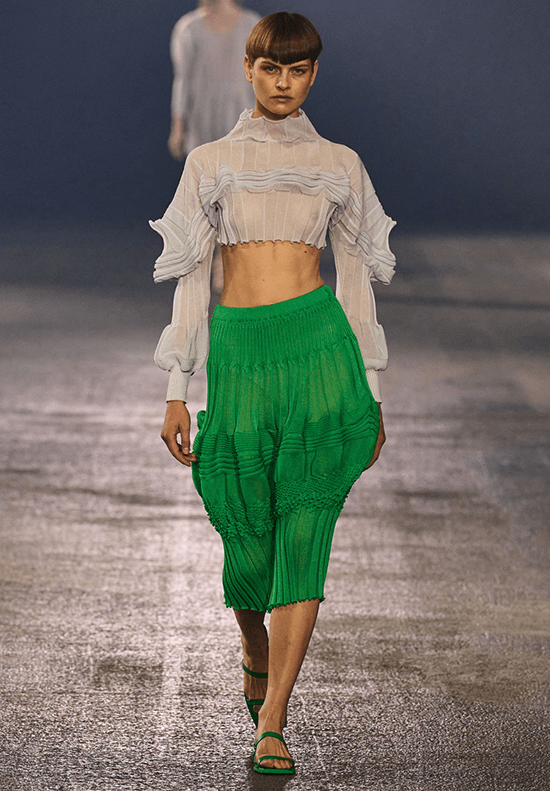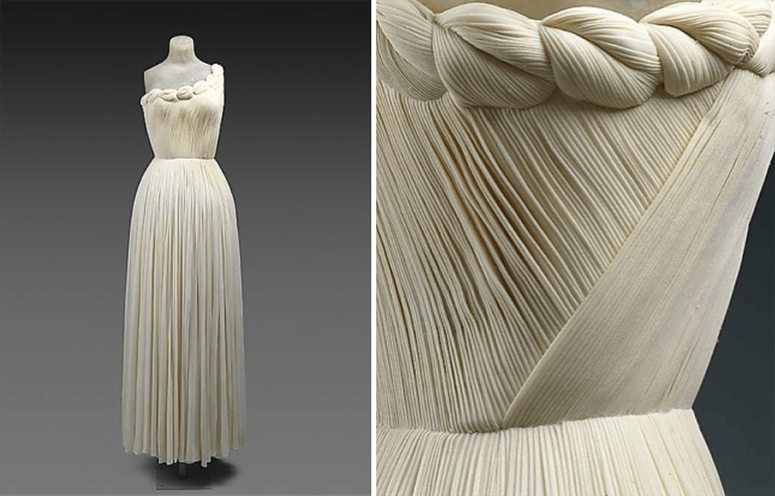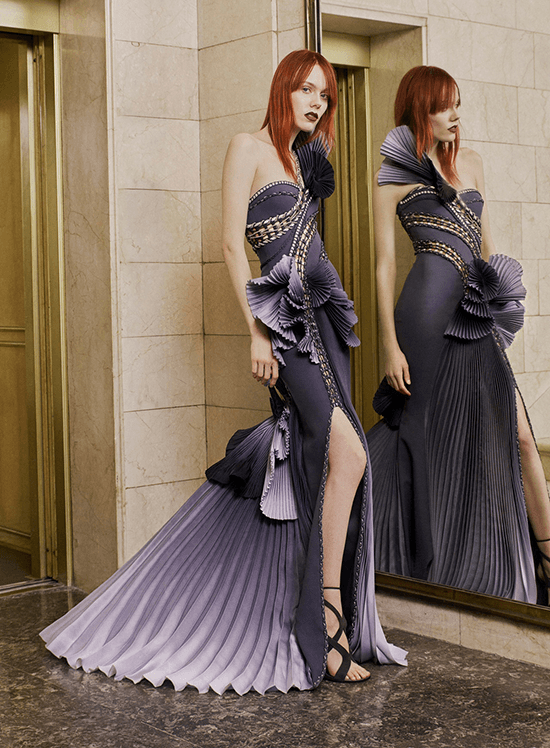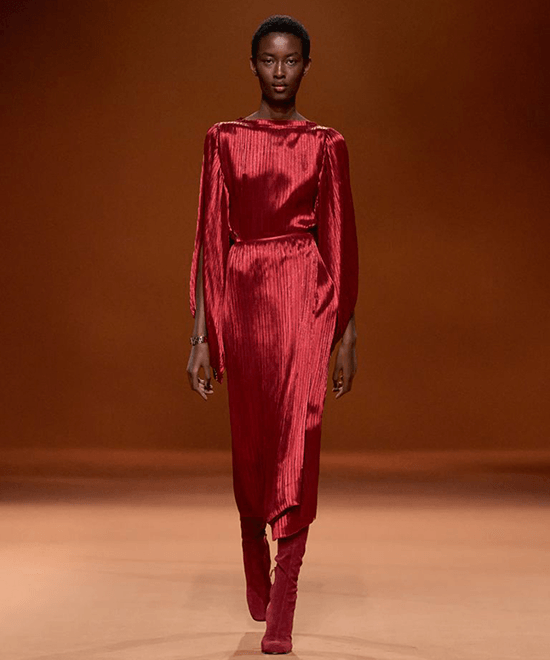The elegance and sensuality of pleats
The first time we saw Pleats Please garments by Issey Miyake, we knew we just had to own one. It embodied that sense of freedom and joy that the designer always wanted to achieve with his pieces. The ease of movement that the expandable pleats afforded would definitely make one happy, but so did the beauty of the piece and the fact that it was inclusive by not choosing any one body type.
Pleats have always fascinated the world of fashion, with their exquisite folds in garments exuding a certain luxury and sensuality. It’s no wonder they were a symbol of power and wealth in ancient Egypt, created by hand to decorate the tunics of rulers. They remained an emblem of status up to the Elizabethan era, as seen in portraits of the Queen and nobles who wore pleated collars known as ruffs.
These fashion statements were so delicate that they were preserved in special boxes and could be worn only a few times before they lost their shape.

In modern fashion history, a new innovation was born in the early 1900s when the Spanish designer Mariano Fortuny invented a pleating technique to create the legendary Delphos dress at his atelier in Venice. Jugendstil, Art Nouveau, and the Aesthetic Movement emerged during this period of rapid urbanization and the growth of industrial societies, inspiring the designer to address the needs of women who had dreams of freedom and were looking for uniqueness.

With the excavations of Sir Anthony Evans in Crete, there was a harking back to ancient Greece, where Fortuny found his inspiration in the bronze statue of the Charioteer of Delph, who wears an Ionic chiton—a draped tunic made from a single rectangular piece of fabric. He made his pleats tinier to simulate seemingly infinite folds.
The columnar Delphos revealed the natural curves of the body, enhancing its shape and flattering the wearer. It was quite revolutionary, freeing women from the constraints of constricted, corseted dresses while conforming to each individual wearer with an elasticity that created a modern relationship between the body and clothing.
While following the fashionable silhouette of the time popularized by Paul Poiret, it did not shackle the legs the way the French designer’s hobble skirt did.

Fortuny’s innovation made such waves that pleating masters like the French atelier Lognon developed the technique further, with artisans devising new ways that have become time-honored craft traditions.
Through the years, aside from doing their version of Fortuny pleats, they also invented their own, accumulating some 2,500 molds used to make every imaginable kind of pleat.

In the 1930s the ancient Greek aesthetic was applied by couturiers like Madeleine Vionnet and Madame Grés to celebrate the natural contours of the female form. While the former was known for popularizing the bias cut to shape the dress that floated freely around the body, the latter draped and pleated directly on the body to create classical goddess gowns that took up to 300 hours to complete, draping the cloth so that the body shaped the dress.

The Grecian ideal would have a resurgence in the late ’60s to ’70s when the socialite Gloria Vanderbilt posed for Vogue in her Fortuny in 1969 and the actress Lauren Bacall wore a vintage red Delphos to the 1979 Oscar ceremony. These gowns harmonized with the sleek, body-conscious minimalism of Calvin Klein and Halston, who sexed-up classicism with bare shoulders, plunging necklines, and high slits.
In 1977, Mary McFadden created her own pleated charmeuse “marii” fabric in designs that captured her experiences of exploring ancient civilizations around the world, mixing the pleated fabric with beaded patterns.

Gianni Versace, who had a deep feeling for his Italian heritage “that knew the aristocracy of sculptural draperies,” would combine luxurious classicism with overt sexuality in Grecian fantasies done with seductive pleats in disco metallics.
In the 1980s, Issey Miyake explored the body’s motions and form to come up with a futurist “garment pleating” that differed from his predecessors by sewing the garments first in an oversized version then pleating them in a heat press, allowing the folds to remain permanently in the fabric’s “memory.” The result was easy-to-wear, crease-free pieces.
He also innovated through cuts that created volume in certain portions instead of just clinging all over, resulting in unusual silhouettes of wearable origami that distorted the body instead of conforming to it.

The recent runway collections show that pleating is alive and well. Gaurav Gupta’s pleats wrap around in waves and were a favorite during awards season. Sacai plays around with different widths and curves of pleats in one piece. Hermès had slim, flat pleats in a red metallic toga.


At the latest edition of Ternocon, finalist Al Rey Rosano pleated his terno by hand in the colors of his native Negros Oriental sunset, while Cheetah Rivera added whispers of pleated wings surrounding his balintawaks. The wide spectrum of possibilities assures a promising future for this historical craft that has proven time and again its universality in providing function as well as beauty.


